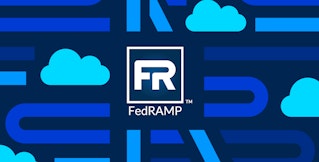
Ari Shahar

Mallory Mooney
Azure Government is a dedicated cloud for public sector organizations that want to leverage Azure's suite of services in their highly regulated environments. As these organizations migrate their applications to Azure Government, they need to ensure that they can maintain visibility into the status and health of their entire infrastructure. We're excited to announce that we've partnered with Azure to enable you to collect low-latency metrics from all of your workloads and Azure services hosted on Azure Government.
Complete visibility into your Azure Government environment
Datadog's Azure integration lets you monitor critical services in your environment, such as Azure Load Balancer and Azure Functions, so you have full visibility into the health and performance of your infrastructure resources. You can set up the integration via the Azure CLI or Azure portal, which provides a seamless onboarding experience for installing the Datadog Agent on your hosts and setting up platform log collection.
Full-stack Azure monitoring
Once you've configured the Azure integration, you can visualize key data using Datadog's out-of-the-box integration dashboards and create alerts to automatically notify you of problems as soon as they happen. And, with more than 850 integrations with other technologies, such as MongoDB and Kafka, Datadog enables you to detect issues in workload performance at each layer of your stack and drill down to specific resources to determine the root cause of an issue.
For example, you can monitor resource utilization across containers within a specific AKS cluster in order to find which ones have higher CPU usage.

You can then drill down to a problematic container to view resource utilization and running processes, so you can determine if a particular workload is consuming too many resources and should be refactored. And, when you collect logs from your AKS cluster, you can correlate them with process activity to get more context for an issue and troubleshoot in real time.
Datadog also collects data from Azure services to automatically generate additional metrics, giving you an exhaustive view of your entire Azure infrastructure as soon as you enable the integration. For example, you can use the generated azure.vm.count metric to view the count and status of all of your environment's virtual machines.

You can use this metric to create an alert that automatically notifies you of unexpected status changes for your Azure VMs, such as provision or allocation failures. These types of failures can be caused by a cluster requesting an incompatible VM or resource constraints that prevent the allocation of a new VM. Triggered alerts include relevant VM tags and logs, so you can find the root cause of a failure and resolve the issue more quickly.
Better inventory management
Taking inventory of available resources in distributed cloud environments can be complicated, but Datadog gives you a better view of what is running in your Azure Government accounts. This enables you to plan and monitor activities that are critical to keeping your services running, such as scheduled maintenance or system version updates.
For instance, end-of-life software, outdated, or misconfigured infrastructure can create vulnerabilities in your environment. It's important that infrastructure resources run on up-to-date software and hardware and are configured with the appropriate security controls. Datadog makes it easy to tag your Azure Government resources with metadata such as hardware version, operating system, availability zone, and cluster, so you can find outdated hosts and search for newly configured resources to ensure they follow compliance policies.

Start monitoring your Azure Government environment
Datadog provides a unified view of your entire Azure ecosystem, including any services running in an Azure Government environment. Check out our documentation to learn more about setting up your Azure services. Or, you can sign up for a free trial to get started.





